Skip to content
Eastern Meadowlark (Sturnella magna)
Summary
- Status in VT: Decreased by 55% (115 to 52 blocks). Greatest decreases in Northern Green Mountains and Southern Green Mountains.
- Data from other research: No additional data for VT.
- Conservation status: State rank S4B; SGCN-M; SSC
- Other atlases: NY, ON, PA: found in fewer blocks
- VT’s role in North American range: VT is within the core of the range.
- Causes of change since first Atlas: Loss of grassland habitat due to conversion of pastures to row crops; intensified agricultural practices including earlier and more frequent mowing.
- Management/Monitoring recommendations: Maintain nesting habitat through control of woody invasive species; alter mowing regimes: delay cutting until at least 7 July (ideally 15 July to 1 August), or limit first mowing to dates earlier than 1 June, and second mowing to no earlier than 65 days after first mowing; promote structural diversity by planting a variety of grass and forb species.
Population Trends
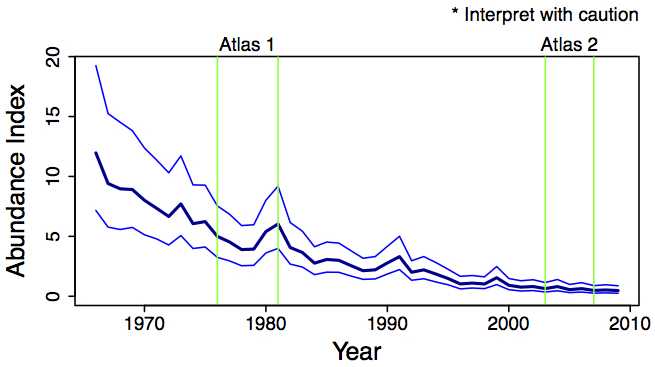
First Vermont Breeding Bird Atlas (1976-1981)
Species Account
Second Vermont Breeding Bird Atlas (2003 – 2007)
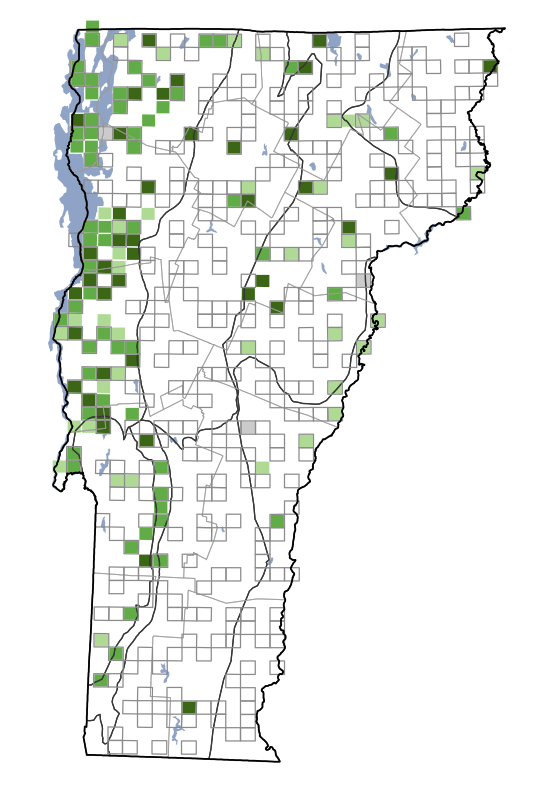

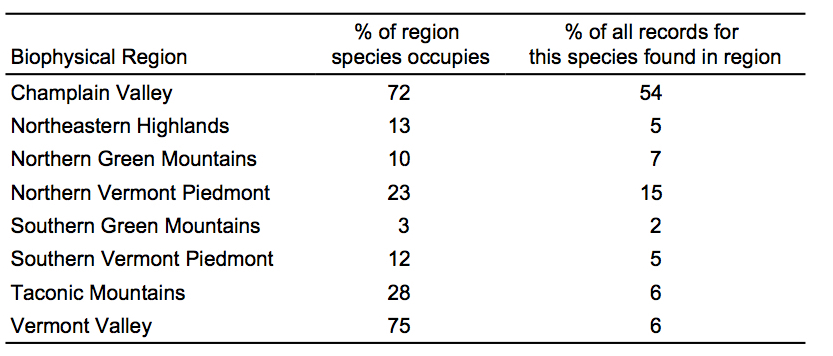
Change in Distribution

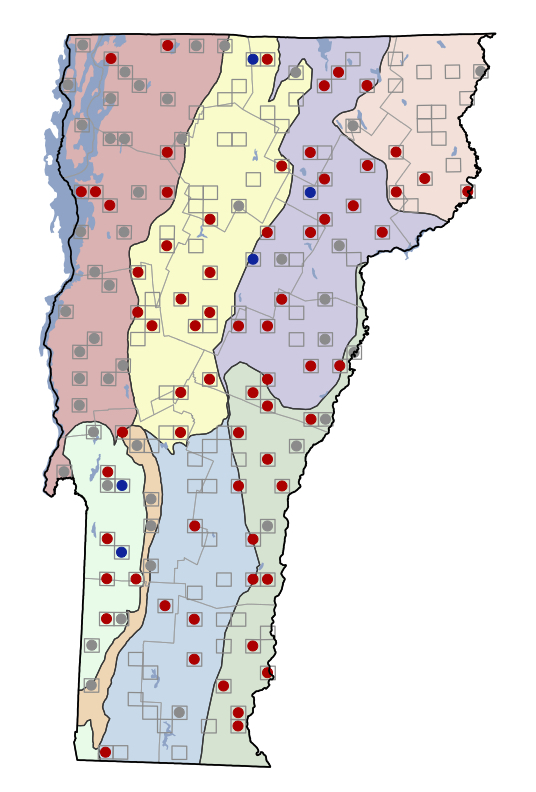
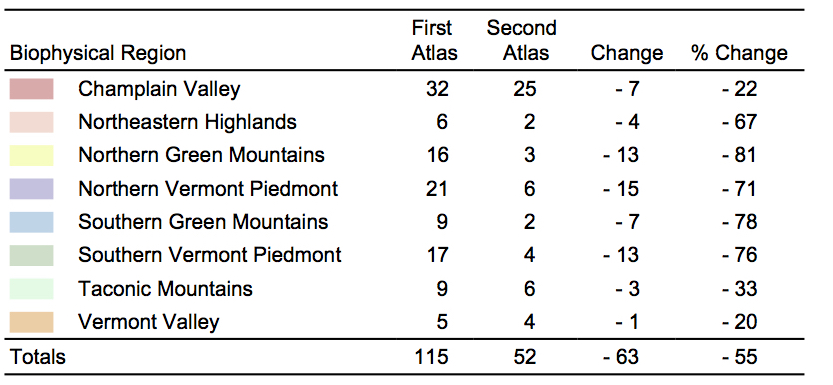
Links
Vermont eBird
Encyclopedia of Life
All About Birds













